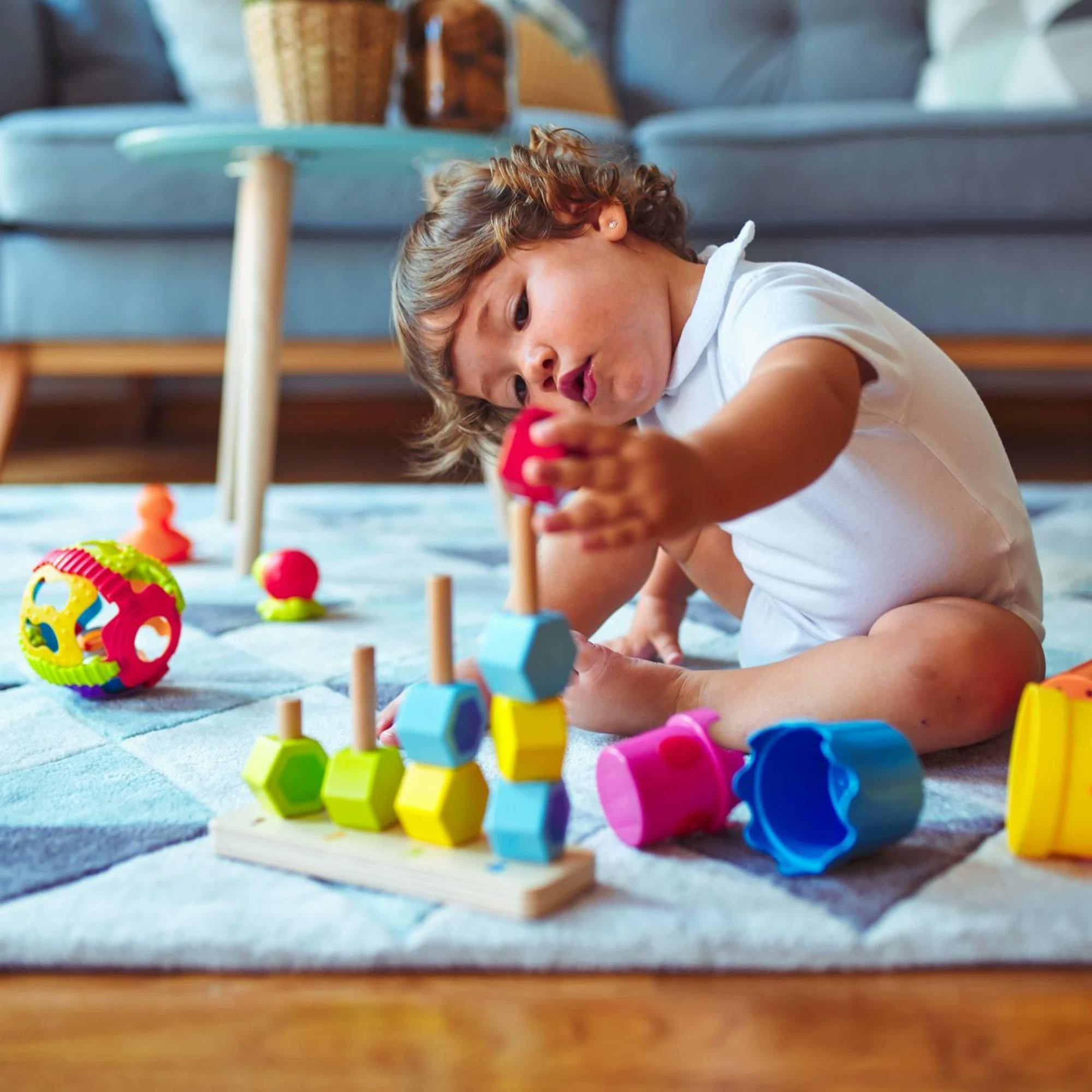Feeding Questions for 2 Year Olds Speech Language Pathology
In other articles, we've covered important language milestones from 0-12 months and 12-24 months. The first several years of a child's life are a time of rapid language learning, and the ages of 24-36 months are no exception!
To illustrate this point, look no further than the explosion of vocabulary that happens during this developmental stage. The vocabulary of a typically developing child at 2 years old is usually 200-300 words. That number jumps to approximately 450 words by 30 months and 1,000 words by 36 months.
As you can imagine, the expectations on a child also increases. Kids at this age commonly use these words to communicate what they want and feel, and are also able to follow more complex directions. They're able to sit and participate in more challenging activities and interact with their peers to start building social relationships.
Let's dive in further and discuss what you should anticipate in this crucial stage of development.
Receptive language skills for 2- to 3-year-olds
Receptive language refers to how we attend to, process, and understand language. It is one of the most important building blocks of a child's social and academic development. Between the ages of 2-3, you should notice the following:
-
Answering WH-questions. Your child should begin to understand and respond to questions that begin with who, what, when, where, and why. Examples include: "What's that?" "Who is __?" or "Where is __?" They should also be able to point to objects when described, such as "What do you wear on your feet?"
-
Pointing to body parts when named verbally
-
Carrying out two-step related directions, such as "Please go to the table and bring me the cup." They should also begin to complete two-step directions that are unrelated, such as "Throw the ball and clap your hands."
-
Pointing to at least 15 pictures of objects when named
-
Understanding directional concepts, such as under, in, on, in front of, behind
-
Starting to understand differences in sizes, such as big, large, small, little
-
Comprehending "yours" and "mine," as well as turn taking: "my turn" and "your turn"
-
Understanding verbs and identifying them in pictures, such as jump, run, throw
-
Recognizing family labels, such as dad, mom, brother, sister, baby, or grandma
-
Listening to books and stories for longer periods of time, as well as pointing to objects of interest while listening to the reader
Expressive language skills for 2- to 3-year-olds
Expressive language refers to how we use sounds and words to communicate our wants and needs. At 24 months, we anticipate a child is using mostly words to express themselves. Between the ages of 2-3, you should notice the following:
-
Uses 2- to 3-word sentences around 24 months, which increases to 3- to 4-word sentences by 36 months
-
Engages in short conversations
-
Begins using pronouns, such as I, my, mine, you, your/s, she, he, and we
-
Starts to use WH-questions, such as "Where is ___" and "What is ___ doing?"
-
Uses prepositions, such as in, on, off, down, up
-
Begins to communicate their feelings and emotions verbally rather than physically
-
Uses more grammatical morphemes, such as plurals (socks), present progressive tense (crying), and possessives (baby's bottle)
-
Uses at least 50 words when speaking spontaneously and independently
-
Names family members and peers
-
Begins to play and experiment with their voice, such as whispering
-
Initiates singing their favorite songs
Other important milestones for 2- and 3-year-olds
Beyond speech and language, there are many other important developmental skills that are generally acquired during this stage.
For example, it's common to see an increase in the development of a child's play skills. Their play-based activities become more complex as they begin to participate in pretend play and use toys for their intended purpose. You might catch your toddler playing house, talking on a pretend telephone, or talking with their dolls. They should also be able to do more complicated activities, such as completing puzzles, or engaging in sensory play, such as Play Doh or kinetic sand.
Toddlers are just learning how to communicate using language, and engaging your child in simple pretend play enables them to expand these foundational language and social skills. The joint attention that occurs when sharing an experience, such playing kitchen, also helps with skills like the ability to pay attention, which is crucial in an academic setting.


Babies and Toddlers
Using Play to Promote Speech and Language Development
Leanne Sherred, M.S., CCC-SLP
4 MINUTE READ
At this age children should also be exploring most foods and textures. Kids should be independently feeding themselves with a fork or spoon, as well as using their pincer grasp (holding something between the thumb and first finger). They should begin to drink from an open cup or a straw and no longer use a bottle and pacifier. While they may have a strong preference for macaroni and cheese, they also will try new foods and, after a few attempts, may accept those new foods into their diet.
What should speech sound like in 2- and 3-year-olds?
While all children are different, here's a general rule of thumb: By the age of 24 months, you should be able to understand about 50% of a child's speech. That number should increase to about 75% by the time they reach their third birthday.
Your child should also be learning new speech sounds during this time. Between the ages of 2 and 3, we expect a child to have mastered /p/, /m/, /h/, /n/, /w/, and /b/ sounds. They should be close to mastering their /k/, /g/, /d/, /t/ and /ng/ sounds. They should also have started using the sounds /f/ and /y/.
By the time children are 3 years old, they shouldn't be saying "nana" when requesting a "banana." Nor should they be omitting the last consonant of a word, such as saying "ca" for "cat." During this year of development, they should also be stating "bottle" instead of reduplicating a syllable, such as "baba."
When does your child need speech therapy?
As mentioned previously, sometimes children need extra help to develop their speech and language. Language skills build on top of each other over time, much like a ladder. And when children don't reach important communication milestones early on, they're often at risk of falling behind. The earlier you can intervene, the more likely they are to reach their communication goals. Here's some things to look for:
-
At 24 months, monitor whether your child's language seems limited and they're using less than 50 words. It's also important that they begin to combine their words into two-word phrases. Pay close attention to how well you can understand their language, or if they seem to be regressing in their development.
-
At 36 months, check whether your child's language is limited to single-syllable words with no final consonants, or if they use few or no multi-word phrases, are not able to ask common WH-questions, or their speech seems unintelligible. Another cause for concern is if your child has frequent tantrums due to their inability to be understood, or if they have echolalia (parroting of speech without trying to communicate).
If your child isn't meeting age-appropriate milestones or doesn't seem to be speaking as much as their peers, don't panic! What's important is that talk with a professional, such as your pediatrician and a qualified speech therapist.
Since the ages of 2 and 3 are such critical learning years, it's important to provide kids with the support they need in order to express themselves and to fully communicate their wants and needs.
While it may be tempting to take the "wait and see" approach, research indicates that early intervention benefits kids both socially and academically as they grow older. By addressing these speech or language delays early, it can significantly reduce frustration for you and your child, and allow them to better learn and participate in the world around them.
Source: https://www.expressable.com/learning-center/babies-and-toddlers/speech-and-language-milestones-for-2-to-3-year-olds
0 Response to "Feeding Questions for 2 Year Olds Speech Language Pathology"
Post a Comment